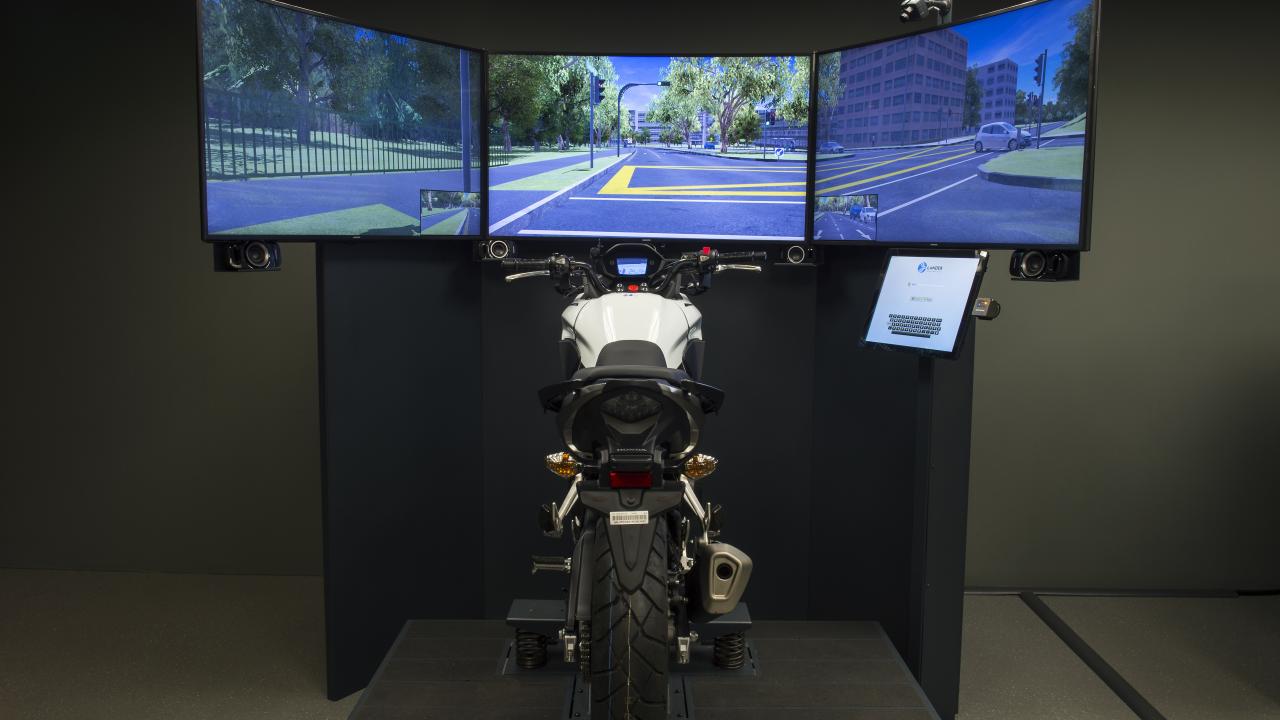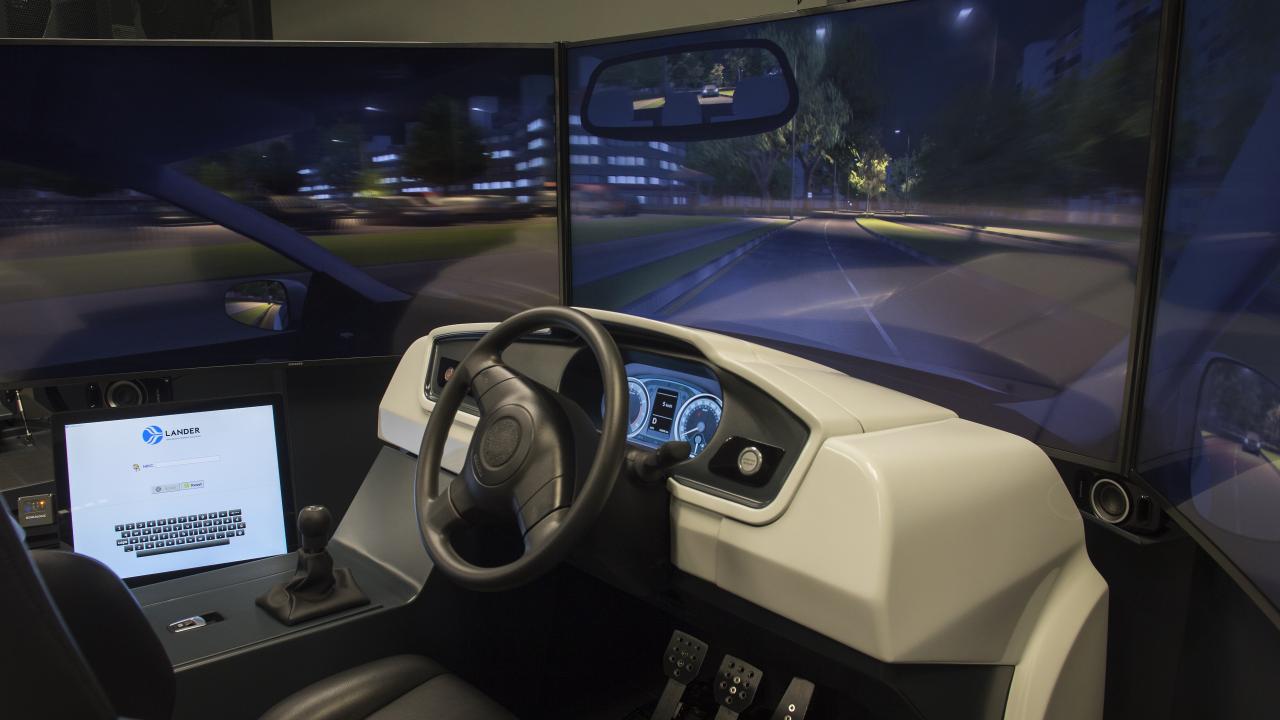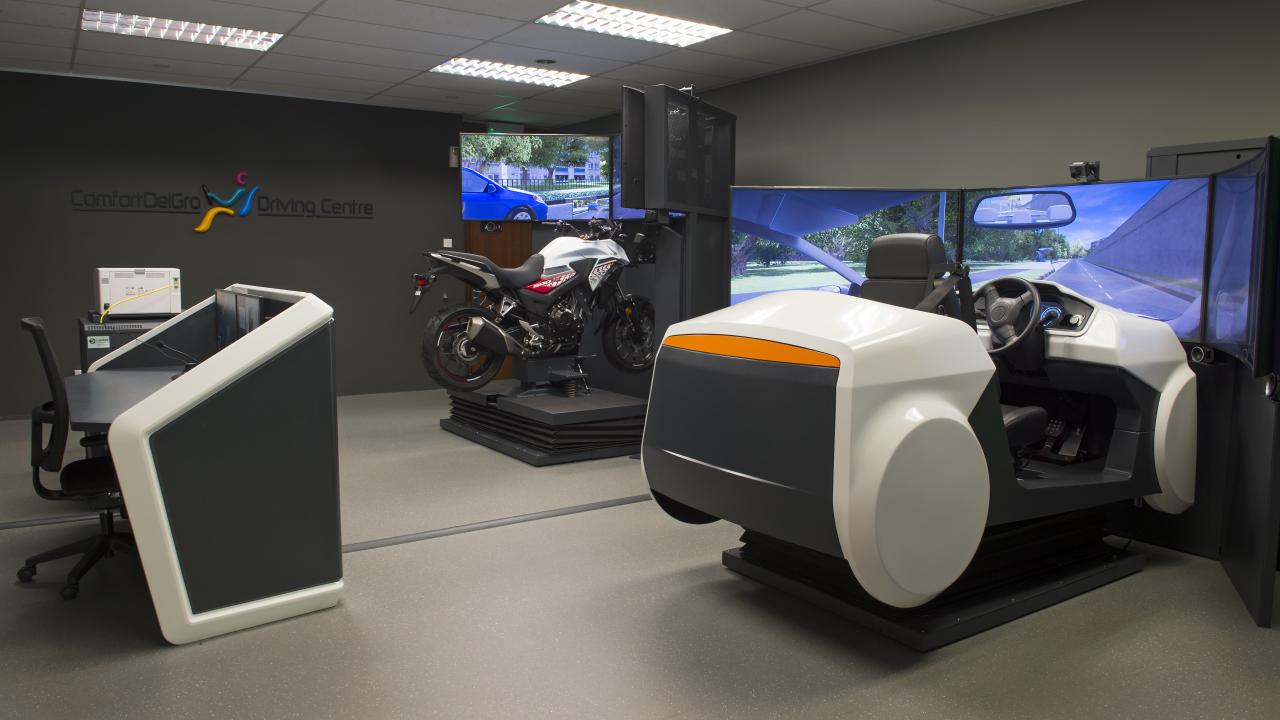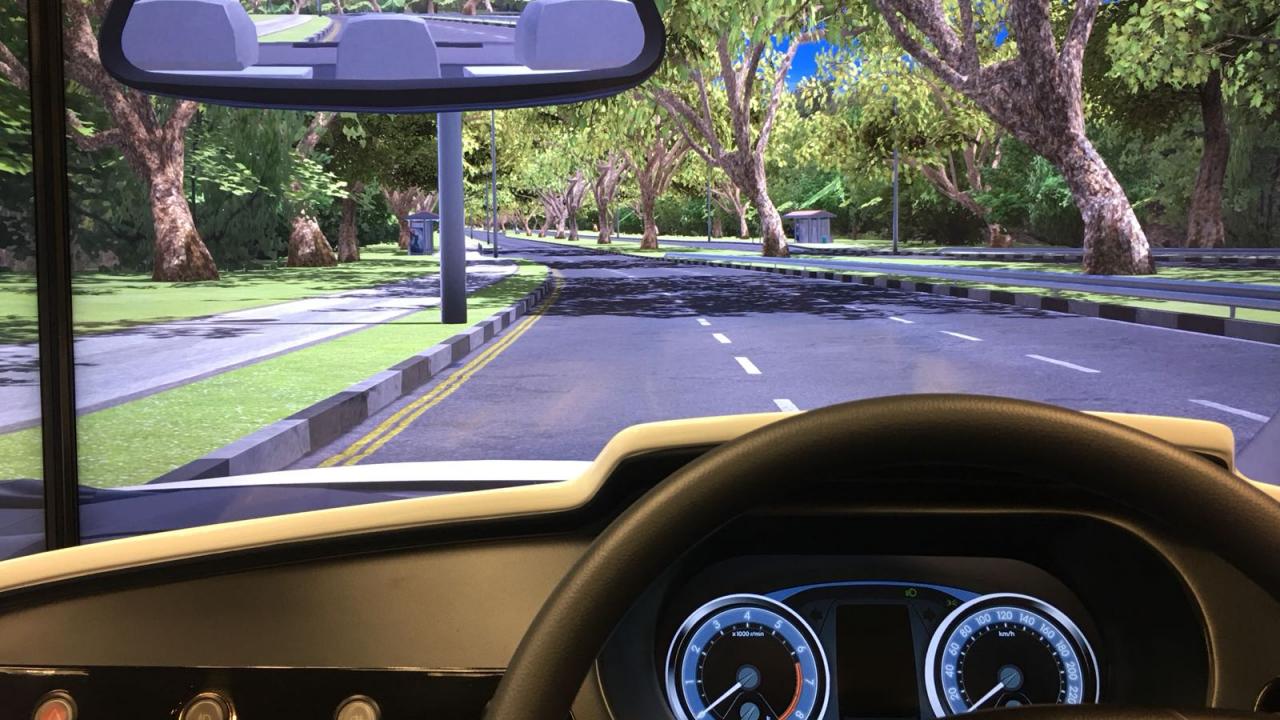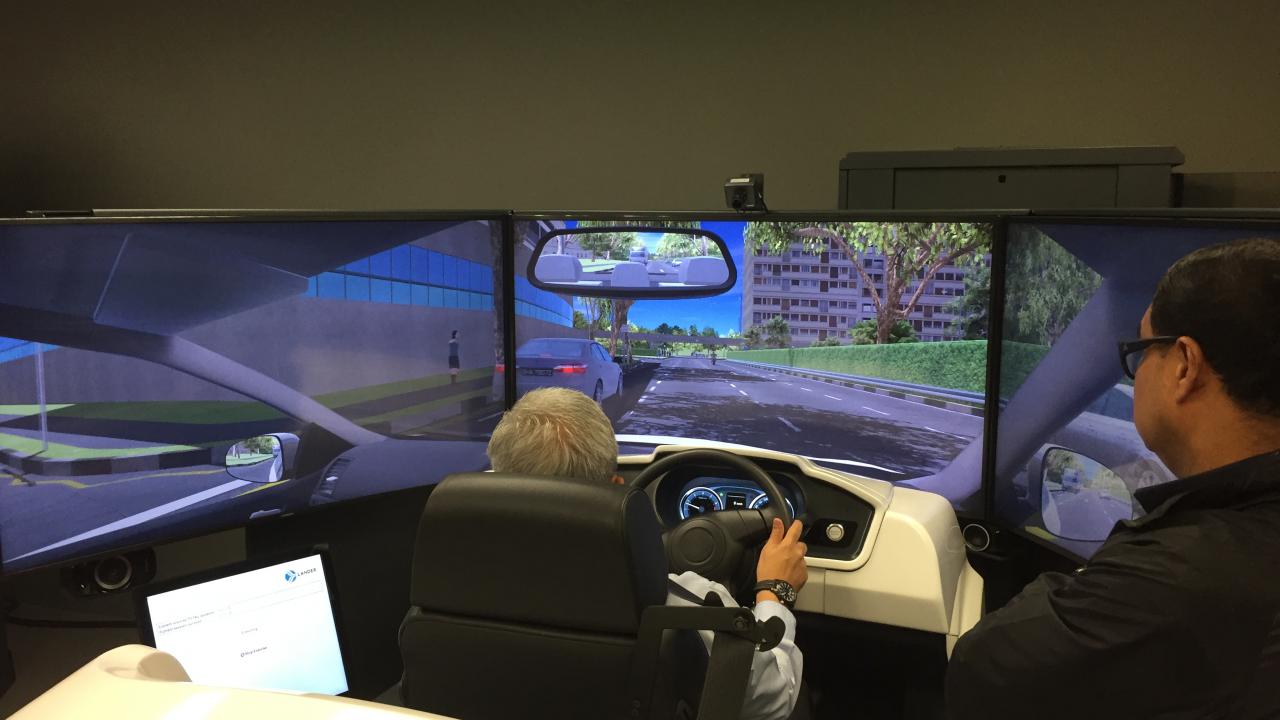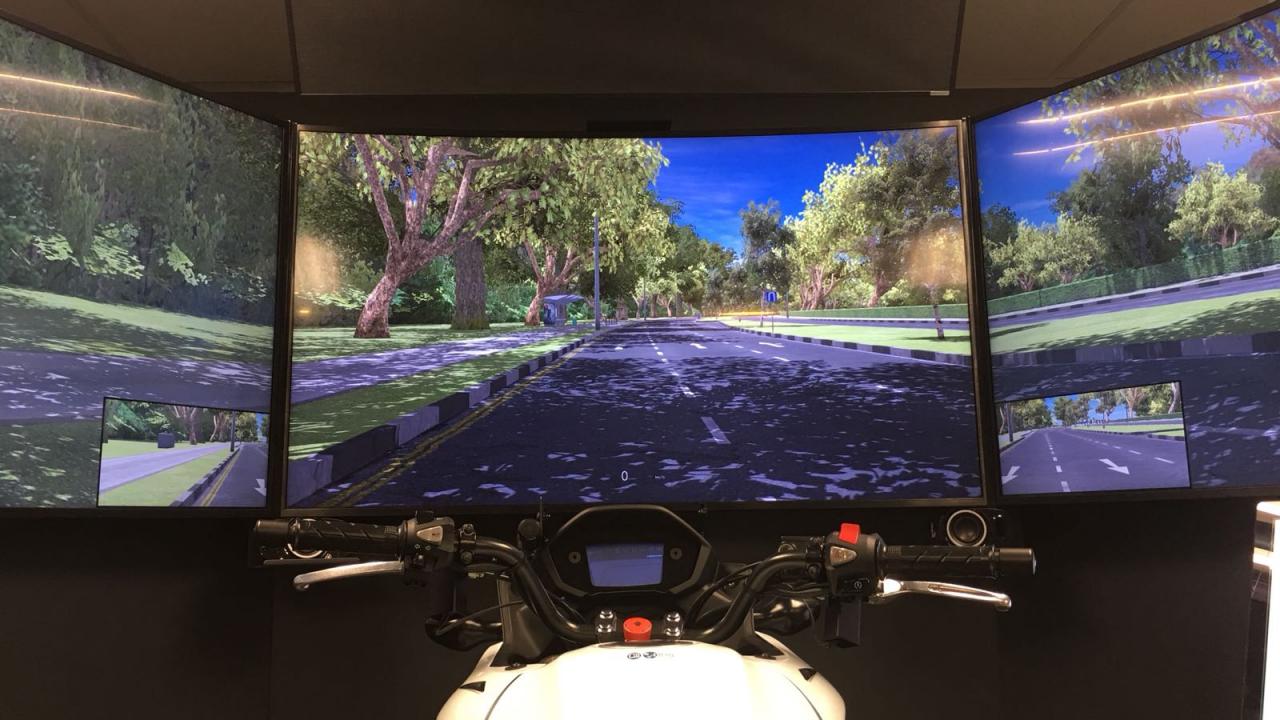Wednesday, May 6, 2020
Advanced self-training on smart simulators
It doesn't matter if it's day or night, dry or wet roads, the simulator is always ready to train motorcyclists and car drivers for what could happen to them on the streets of Singapore.
Every day of the week, more than 300 students pass between approximately 8:30 am and 10:30 pm, through the driving simulators that LANDER developed in collaboration with the Singapore Traffic Police and the CDC, SSDC and BBDC driving schools. Since five months ago, the country is equipped to train and educate its drivers on the 10 most common accidents that occur on the roads and streets of Singapore.
The vehicle ahead slamming on the brakes, specific weather conditions or incidents or falling objects, are a few examples of situations that the Traffic Department has defined and developed, including the finest details, and which LANDER has implemented in units that can be fully tailored to the needs of each customer.
The routes, events, assessments, outcomes and other scenarios of this project have been designed to ensure that the simulation systems in Singapore's current driver training centres are fully automated and interactive. The main role of real instructors is to supervise the training installations and ensure that all systems and units are in perfect working order. The simulator is responsible for all other tasks. Driving students mainly interact with the system's smart virtual instructor, which allows a large number of driving students to participate in the training courses every day, without requiring a large number of instructors to be present at the training centres.
Everything starts when the driving student joins a driving school to obtain the driving licence. The driving school will book a session on the simulator for the driving student (at a given date and time). When the driving student has been registered, the driving school's database will send the information to the simulator's database to book a training session. The driving student will then receive information about the simulation sessions that have been booked: three different simulation sessions before taking the practical exam on the vehicle in a real driving scenario.
The driving student is greeted by the instructor at the simulator room. The instructor will give the driving student a series of guidelines and basic tips on how to use the system, asking the student to sit at the corresponding simulator. The simulator will be reserved for the driving student, thanks to the integration of the simulator system with the driving school's database. In other words, each simulator "knows" who will be using it, at what time and what session must be started. Therefore, the daily schedules of all simulators will be programmed and completed with the information hosted in driving school's database.
To start using the simulator, the driving student must login by scanning the NRIC or Work Pass card. The simulation session will start automatically when the system has verified the driving student's identity and confirmed that the driving student has booked the session. Now is the time to enjoy the experience! In each one of the three sessions, driving students will face five different scenarios with risks and unexpected events throughout a predefined route. The virtual instructor will guide the driving student throughout the route, providing spoken orders when needed. When a driving student makes a minor error, the virtual instructor will provide the corresponding recommendations. In the case of major errors (for example, an accident), the simulation session will be paused, and the system will show a summary of what happened and how the driving student should have prevented this situation. The simulation session will be resumed automatically after this. The session will continue until the driving student completes it or exceeds the time allocated for the session.
At the end of each training session, the driving student's results are sent to the driving school's database. According to the results, the driving student can book a different training session. The simulator system will prepare an automatic summary report of each session, which the driving student can view on the interactive touchscreen and also print. Objective and instantaneous feedback will help driving students learn about their performance and assimilate what they have learnt.
Thanks to this smart system, Driver Training Centers cater to the high demand without increasing human resources for it. In addition, the level of detail offered by the simulator for each situation makes the training 100% adapt to the reality of driving the place, maximizing learning efficacy.
This innovative functional architecture can be applied and adapted to the training plans of any organisation and country across the world. Therefore, LANDER expects to continue to offer its experience in technology applied to training, with the ultimate goal of improving road safety.
